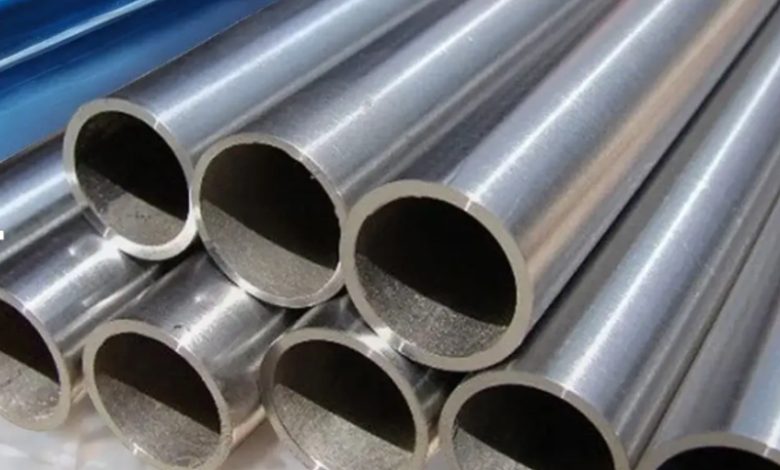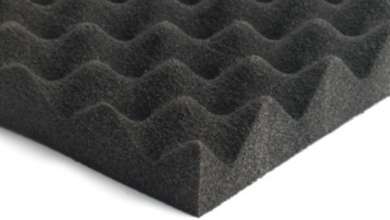Pipe Schedule Chart: A Complete Guide for Steel Pipe Selection

When working with steel pipes in industrial applications, selecting the right pipe wall thickness is crucial for safety, performance, and compliance. One of the most essential tools used by engineers, designers, and procurement teams is the Pipe Schedule Chart.
At Tuspipe, we supply high-quality steel pipes and help our clients understand technical specifications like schedules and dimensions. This article will explain everything you need to know about the Pipe Schedule Chart, how to read it, and why it matters when choosing pipes for your projects.
What is a Pipe Schedule?
A pipe schedule is a standardized system used to define the wall thickness of a pipe. It helps determine the pipe’s pressure handling capability and strength.
Each pipe schedule (SCH) is associated with a specific wall thickness that varies depending on the nominal pipe size (NPS). The most commonly used pipe schedules include:
- Schedule 10
- Schedule 20
- Schedule 40
- Schedule 80
- Schedule 120
- Schedule 160
- Schedule XXS (Double Extra Strong)
These schedules appear in a Pipe Schedule Chart, allowing users to compare wall thicknesses for different diameters.
What is a Pipe Schedule Chart?
A Pipe Schedule Chart is a reference table that shows:
- Nominal Pipe Sizes (NPS)
- Outer Diameter (OD)
- Wall Thickness
- Pipe Schedule (e.g., SCH 40, SCH 80)
- Inner Diameter (ID)
This chart is a quick and essential tool for engineers and buyers when selecting pipe dimensions that meet design and pressure requirements.
At Tuspipe, we provide a clear and detailed Pipe Schedule Chart to support the accurate selection of steel pipes in both metric and imperial units.
See also: Sanctions Screening Explained: Protect Your Business from Violations
How to Read a Pipe Schedule Chart
Reading a Pipe Schedule Chart involves matching the Nominal Pipe Size (NPS) with the desired Schedule Number to find the corresponding Wall Thickness and Inner Diameter (ID).
Let’s break it down:
Example Entry from a Pipe Schedule Chart:
| NPS (in) | OD (in) | SCH 40 Wall (in) | SCH 80 Wall (in) |
| 2 | 2.375 | 0.154 | 0.218 |
- NPS: 2 inches
- Outside Diameter (OD): 2.375 inches (remains constant)
- Schedule 40 Wall Thickness: 0.154 inches
- Schedule 80 Wall Thickness: 0.218 inches
As schedule number increases, wall thickness increases, reducing the inner diameter.
Why is the Pipe Schedule Chart Important?
The Pipe Schedule Chart is vital for:
- Design Accuracy: Ensures compatibility with pressure and structural requirements.
- Material Selection: Helps choose the right grade and thickness for the application.
- Cost Efficiency: Thinner pipes (e.g., SCH 10) are more economical but may not meet pressure demands.
- Code Compliance: Aligns with ASME, ASTM, and API standards.
Tuspipe supplies steel pipes that comply with international standards and help users make the right choices with a dependable Pipe Schedule Chart.
Common Pipe Schedules and Their Applications
Schedule 10
- Thin wall
- Used in low-pressure applications
- Common in water systems, HVAC, and ornamental use
Schedule 40
- Standard wall
- Most common schedule used globally
- Suitable for water, gas, and industrial piping systems
Schedule 80
- Thicker wall
- Handles higher pressures
- Used in chemical processing, power plants, and oil & gas
Schedule 160 and Schedule XXS
- Extra heavy wall
- Designed for high-pressure and high-temperature environments
- Ideal for offshore, oilfield, and critical applications
Pipe Schedule Chart vs. Pipe Size
It’s important to distinguish between pipe size and pipe schedule:
- Pipe Size (NPS): Refers to the nominal size, not exact measurement.
- PipeSchedule: Refers to the wall thickness, not the outer diameter.
Even though a 2-inch NPS pipe always has a 2.375-inch OD, the ID and wall thickness vary based on the schedule, as shown in the Pipe Schedule Chart.
International Standards for Pipe Schedules
At Tuspipe, our steel pipes conform to international standards such as:
- ASME B36.10M (Welded & seamless steel pipe)
- ASME B36.19M (Stainless steel pipe)
- ASTM and API standards
These standards define pipe schedules and dimensions, ensuring quality and performance in global applications.
Benefits of Using a Pipe Schedule Chart from Tuspipe
✅ Accurate and Standardized Data
Our chart follows ASME/ASTM norms for reliable design.
✅ Easy Unit Conversion
We provide schedules in both Imperial (inches) and Metric (mm) units.
✅ Time-Saving Reference Tool
Ideal for engineers, designers, and procurement professionals.
✅ Backed by Quality Products
Every dimension listed in our Pipe Schedule Chart corresponds to pipe options available in our inventory.
✅ Expert Support
Our technical team can guide you in selecting the right pipe schedule for your specific needs.
Industries That Rely on Pipe Schedule Charts
The Pipe Schedule Chart is widely used in:
- Oil & Gas
- Water Treatment
- Chemical Processing
- Construction & Infrastructure
- Power Generation
- Marine & Offshore
From low-pressure utility piping to high-pressure steam lines, understanding the correct pipe schedule is critical. Tuspipe provides reliable steel pipe products with complete dimensional support through our pipe schedule resources.
Download Tuspipe’s Pipe Schedule Chart
Need a copy of our updated chart? Visit our Pipe Schedule Chart page to download a free PDF or use our interactive chart tool. It’s a must-have for engineers and procurement teams involved in piping system design and material specification.
Conclusion
Understanding and using the Pipe Schedule Chart is essential for selecting the right steel pipe for your application. Whether you’re working on a low-pressure water line or a high-pressure industrial system, choosing the correct schedule ensures safety, reliability, and cost-efficiency.
At Tuspipe, we combine product quality with technical expertise. Our comprehensive Pipe Schedule Chart simplifies pipe selection and guarantees compatibility with industry standards. Explore our website to find the right pipe schedule for your next project—or contact our team for expert advice.





